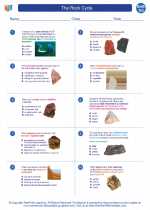Thrombocytes (Platelets)
Thrombocytes, or platelets, are small, irregularly shaped cell fragments that are derived from the fragmentation of precursor cells in the bone marrow called megakaryocytes. They are essential for the process of blood clotting, or coagulation, which is the body's natural response to blood vessel injury.
Function of Thrombocytes
Thrombocytes play a vital role in hemostasis, the process that stops bleeding at the site of a blood vessel injury. When a blood vessel is damaged, platelets adhere to the site of injury and become activated. They then release chemical signals that attract other platelets to the area, forming a platelet plug. Additionally, platelets release clotting factors that help to strengthen and stabilize the plug, ultimately forming a blood clot.
Structure of Thrombocytes
Platelets are small, with a diameter of 2-3 µm, and they lack a nucleus. They contain numerous granules that store various substances involved in the clotting process, such as clotting factors, enzymes, and chemicals that promote blood vessel constriction. The cytoplasm of platelets also contains structures called alpha and dense granules, which are essential for their function in clot formation and repair of damaged blood vessels.
Regulation of Thrombocyte Production
The production of thrombocytes is tightly regulated by a hormone called thrombopoietin, which is produced in the liver and kidneys. Thrombopoietin stimulates the production of megakaryocytes in the bone marrow, which in turn produce and release platelets into the bloodstream. The number of circulating platelets is also regulated by a balance between their production and removal from the bloodstream.
Disorders Related to Thrombocytes
Abnormalities in thrombocyte function or quantity can lead to bleeding disorders or clotting disorders. For example, thrombocytopenia is a condition characterized by a low platelet count, which can result in excessive bleeding and difficulty forming clots. On the other hand, disorders such as thrombocythemia can lead to an excessive number of platelets, increasing the risk of abnormal clot formation and potential blockage of blood vessels.
Study Guide for Thrombocytes
To understand thrombocytes in depth, consider the following study topics:
- Structure and function of thrombocytes
- Role of thrombocytes in the clotting process
- Regulation of thrombocyte production by thrombopoietin
- Disorders related to thrombocytes, such as thrombocytopenia and thrombocythemia
- Comparison of normal and abnormal clotting processes involving thrombocytes
For a comprehensive understanding of thrombocytes, it is essential to study their role in the coagulation process, their structural characteristics, and the regulatory mechanisms that control their production and function.
.◂Earth Science Worksheets and Study Guides High School. The Rock Cycle

 Worksheet/Answer key
Worksheet/Answer key
 Worksheet/Answer key
Worksheet/Answer key
 Worksheet/Answer key
Worksheet/Answer key
 Vocabulary/Answer key
Vocabulary/Answer key
 Vocabulary/Answer key
Vocabulary/Answer key
 Vocabulary/Answer key
Vocabulary/Answer key
